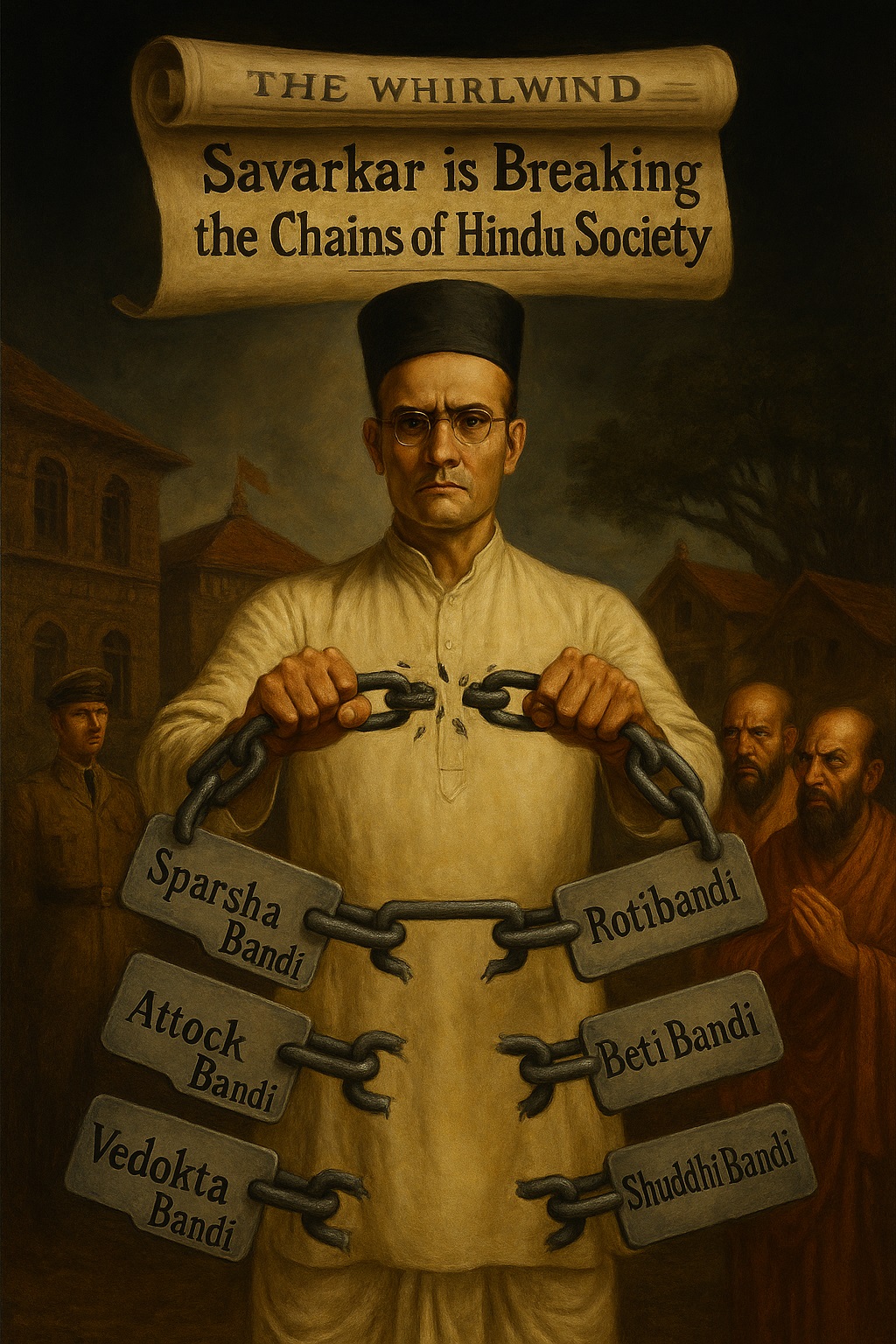Social-Reformist Dimension of Hindutva, Part 7
Veer Savarkar’s time in Ratnagiri, a period of enforced confinement following his years in the Andamans, proved to be a pivotal chapter in his focus on social reform. Released from prison in 1924, he was subjected to stringent restrictions, including a ban on political activity and a mandate to remain within the Ratnagiri district. This imposed isolation, lasting until 1937, became the catalyst for his concentrated efforts to dismantle the social ills plaguing Hindu society.
From Frustration to Action
Savarkar’s frustration with the perceived inaction of his contemporaries fueled his drive. He decried the endless philosophical debates that yielded no tangible results. It was in 1935 that he famously declared the necessity of implementing reforms rather than merely preaching them, underscoring that genuine change transcends rhetoric. This principle was further articulated in his 1937 “Maxim of Action” speech delivered in Kolhapur, where he advocated for prompt action over protracted discourse.
The Seven Chains of Hindu Society
Savarkar’s social thought was structured around the concept of “seven chains” that he believed hindered the progress of the Hindu nation. These were:
- Untouchability (Sparsha Bandi): The abhorrent practice of ostracizing certain castes.
- Restrictions on Inter-Caste Dining (Rotibandi): The prohibition of sharing meals across caste lines.
- Prohibition of Sea Travel (Attock/Sindhu Bandi): The ban on venturing overseas.
- Prohibition of Inter-Caste Marriage (Beti Bandi): Restrictions on marriages between different castes.
- Restrictions on Studying Sacred Texts (Vedokta Bandi): Denying access to religious knowledge to certain groups.
- Restrictions on Practicing Certain Professions (Vyavasaya Bandi): Limiting occupational choices based on caste.
- Prohibition of Reconversion (Shuddhi Bandi): Preventing those who had converted to other religions from returning to Hinduism.
Savarkar saw these “chains” as fragmenting Hindu society, rendering it weak and vulnerable. He believed that true national progress required a “free spirit,” unburdened by irrational beliefs and social prejudices.
A Vision of a United and Progressive Hindu Society
Savarkar’s mission in Ratnagiri was to forge a united, organized, and progressive Hindu society. He understood that without social reform, political freedom alone would be insufficient. He emphasized that a homogeneous society provided the necessary stability for nation-building, enabling India to compete on the global stage.
His efforts during this period focused on practical implementation of his reforms, rather than just theoretical discussions. He wanted to break the social barriers that were weakening Hindu society. The social reforms, in his mind, were essential to create a post-colonial integrated nation.
Key Takeaways:
- Savarkar’s forced confinement in Ratnagiri transformed into a period of intense focus on social reform.
- He advocated for action over mere philosophical discourse.
- His “seven chains” highlighted the social ills he believed were hindering Hindu society’s progress.
- He believed a unified and reformed Hindu society was a prerequisite for a strong and stable nation.
Savarkar’s time in Ratnagiri offers a compelling glimpse into his commitment to social reform, a crucial dimension of his broader vision for a revitalized India.
Which of Savarkar’s ‘seven chains’ do you think had the most significant impact on Hindu society? Do you agree with Savarkar’s emphasis on action over philosophical debate? What are your thoughts on the relationship between social reform and national unity? Share your insights in the comments below!
Sources:
GODBOLE, Vasudev Shankar. 2004. Rationalism of Veer Savarkar. Itihas Patrika Prashan: Thane/Mumbai.
Keer, Dhananjay. 1988. Veer Savarkar. Third Edition. (Second Edition: 1966). Popular Prakashan: Bombay (Mumbai).
Vaidya, Prem. 1997. Memorable Documentary on Revolutionary Freedom Fighter Veer Savarkar. Veer Savarkar Prakashan: Mumbai.


Leave a Reply